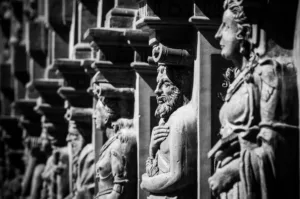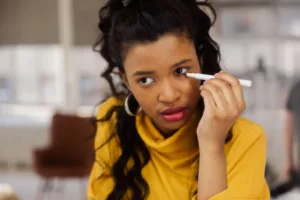The History of Makeup

Makeup, a timeless art of self-expression, has a rich and colorful history that spans centuries. From ancient civilizations to modern times, makeup has been used to enhance beauty, express cultural identity, and signify social status. In this blog post, we will take a journey through time to explore the fascinating history of makeup and how beauty trends have evolved over the years.
Ancient Beginnings
The history of makeup dates back to ancient civilizations, with Mesopotamia and Egypt playing pivotal roles.
- Mesopotamia (c. 3500-2900 BCE): The earliest recorded use of cosmetics can be traced to Mesopotamia, where people used kohl to line their eyes and lips. Kohl was made from a mixture of various minerals and was applied for both cosmetic and protective purposes.
- Ancient Egypt (c. 3100-332 BCE): Ancient Egyptians are renowned for their elaborate makeup rituals. Both men and women used cosmetics, and they believed that makeup had magical and protective qualities. Kohl and eyeshadows were popular, as were red and ochre pigments for lips and cheeks. Egyptians also used perfumed oils and incense for fragrance.
Greece and Rome
- Ancient Greece (c. 800-146 BCE): Greek beauty ideals emphasized natural beauty. Women would use white lead and chalk to lighten their skin, while red ochre was used on lips and cheeks. Dark eyes were desirable, so they used kohl to enhance them.
- Ancient Rome (c. 753 BCE – 476 CE): Roman beauty trends were influenced by Greek traditions. Wealthy Romans would often use lead-based formulas to whiten their skin, which unfortunately had toxic consequences. They also used cosmetics made from natural ingredients like berries for lip color.
The Middle Ages
- Medieval Europe (5th-15th centuries): During the Middle Ages, makeup fell out of favor in Europe, and pale skin became the ideal. Women would go to great lengths to achieve a fair complexion, often using dangerous substances like lead-based cosmetics. Red hair was considered a sign of witchcraft, leading many to bleach or dye their hair darker.
Renaissance and Enlightenment
- Renaissance (14th-17th centuries): The Renaissance saw a revival of interest in cosmetics, with a focus on achieving a more natural look. Women used egg white as a base for foundation and applied blush made from crushed berries. Perfumes and scented oils were also in vogue.
- Enlightenment (17th-18th centuries): The Enlightenment era brought a more understated approach to makeup. Pale skin was still favored, but cosmetics were used more sparingly. Rouge and lip tints became popular, and the emphasis shifted to a more elegant and refined appearance.
The 20th Century
- 1920s: The Roaring Twenties introduced a dramatic shift in beauty trends. The Flapper era embraced bold, liberated women who wore dark, smoky eye makeup, red lipstick, and short bobbed hairstyles.
- 1940s: During World War II, makeup took on patriotic significance, and red lipstick became a symbol of strength and resilience. The post-war era saw a return to glamour, with iconic figures like Marilyn Monroe influencing beauty standards.
- 1960s: The Swinging Sixties brought about the “mod” look, with Twiggy’s dramatic eye makeup and pale lips making a statement. Bold eyeliner and false eyelashes became iconic.
- 1980s: The 1980s were characterized by excess, and makeup was no exception. Bright and bold colors, heavy blush, and exaggerated eyeliner defined the era. Madonna’s “Material Girl” look and heavy contouring were emblematic of this time.

The 21st Century
- 2000s-Present: The 21st century has witnessed a celebration of individualism and diversity in beauty. Social media has played a significant role in makeup trends, with influencers and makeup artists sharing innovative looks and techniques. Natural beauty, contouring, bold eyeshadows, and matte lipsticks have all had their moments in the spotlight.
The history of makeup is a captivating journey through time, reflecting not only changing beauty ideals but also societal norms, cultural influences, and technological advancements. From the ancient civilizations of Mesopotamia and Egypt to the modern era of individualism and diversity, makeup has continually evolved and adapted to the spirit of the times.
As we look back on this remarkable history, it’s clear that makeup has always been more than just a cosmetic tool; it’s a form of artistic expression and a reflection of the ever-evolving concept of beauty. Today, makeup continues to empower individuals to express themselves in unique and creative ways, celebrating the beauty of diversity and individuality.

